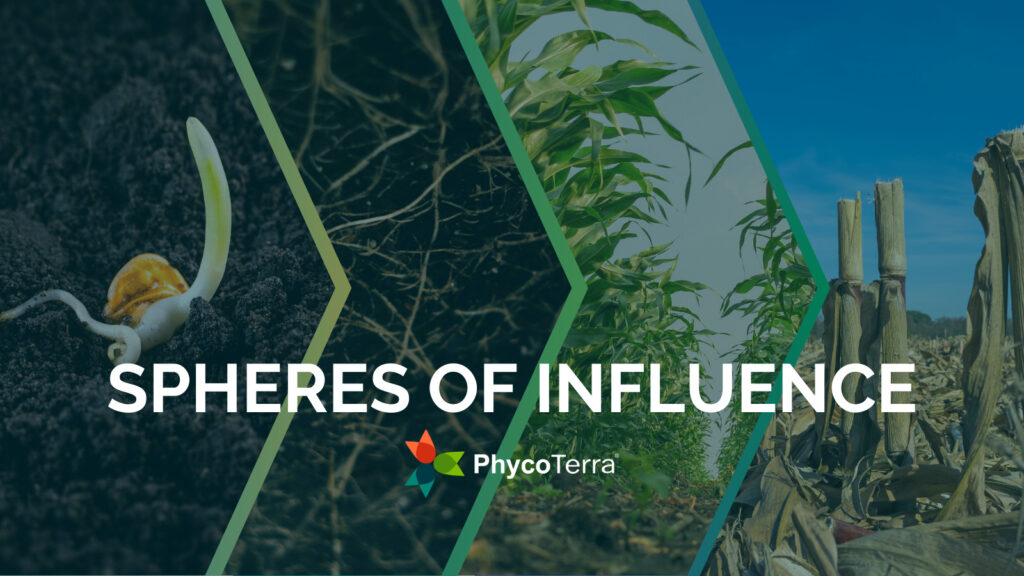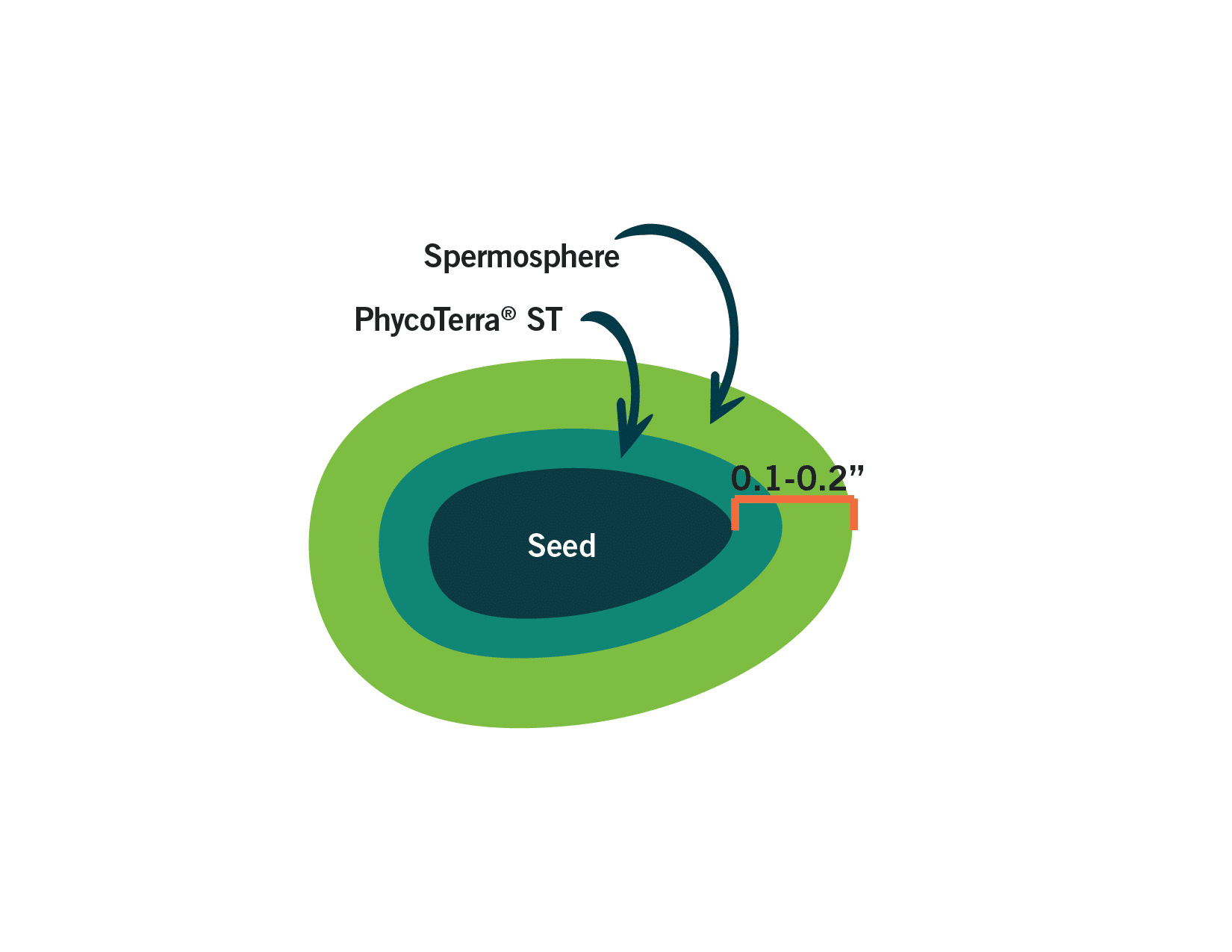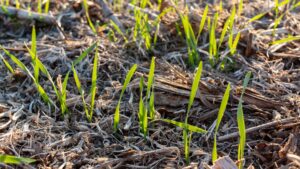If you want to provide your farm with year-round support, there are four spheres you need to know about: spermosphere, rhizosphere, phyllosphere and detritusphere. From seed to stubble, healthy and active microbes in each sphere support higher yield potential.
Plus, each sphere impacts the other. Feeding even one sphere a superior food source can help the other spheres, too, and increase your crops’ yield potential.
The Spermosphere (The Seed)
This sphere is the most impactful to seeds. The spermosphere is a 0.1” to 0.2” area around the seed and its first interaction with the real world. To supercharge your spermosphere, and give your seeds the best chance of germination and even stand, consider adding a seed-focused labile carbon product to feed hungry microbes on and around the seed.
A healthy and active microbiome at the spermosphere can support germination, early plant vigor, root and stand establishment.
The Rhizosphere (The Root)
The spermosphere then transforms (much like a butterfly) into the rhizosphere and begins supporting your seed, roots and plant. An active and healthy microbiome in the rhizosphere can improve water retention, soil aggregate structure and nutrient cycling.
Unfortunately, 75% of soil microbes in farm soils are either dormant or inactive due to starvation from not being fed a proper, well-rounded food source. To wake up the microbes in the rhizosphere, consider feeding your beneficial microbes a soil health labile carbon product so they can assist your crops.
The Phyllosphere (The Leaf)
The phyllosphere is a unique and one of the most under-studied spheres. Yet, new research suggests that the leaf microbiome plays an important role in helping crops manage abiotic stress, which impacts yield potential. Many of the microbes that are in the phyllosphere come from the (seed) spermosphere and the (soil) rhizosphere as well as the air and herbivores.
The phyllosphere is a harsh environment for a microbe to live in. It’s a food desert, with a lack of nutrients for microbes to thrive. It’s constantly changing, and it is the only sphere that interacts with the plant, microbiome and atmosphere.
To support leaf microbes, consider a foliar application to provide beneficial bacteria and fungi with a labile carbon rich food source. One application, that can be easily applied with a fungicide or other foliar applications such as micronutrients, can give microbes the energy they need to reduce abiotic stress for your crops.
The Detritusphere (The Residue)
At the end of each season, growers must determine how they want to manage their post-harvest residue. Rather than using tillage on stubborn stubble, which disturbs and often destroys the diverse microbiome you worked so hard to build, consider pairing your burn down with a microalgae carbon product to wake up microbes that can help break down residue. This method has been shown to reduce residue mass by 23% – increasing soil temperature and planting on average by 5 degrees F.
Breaking down your stubble provides your next crop with a slow release nutrient source. This means it feeds the microbes in the spermosphere, rhizosphere which supports a healthy phyllosphere. Plus, stubble nutrients (like N,P, and K) are then plant accessible to support your crop in the next growing season.
Each sphere is unique and has its own distinctions. Yet, the health and activity of microbes in each sphere overlaps and impacts the other spheres. The microbial ecosystem is just like other biological systems on our planet – one action can impact the rest!
So, feeding your microbes a superior food source not only supports the distinct sphere the microbes are in, but other spheres and your overall yield potential.









